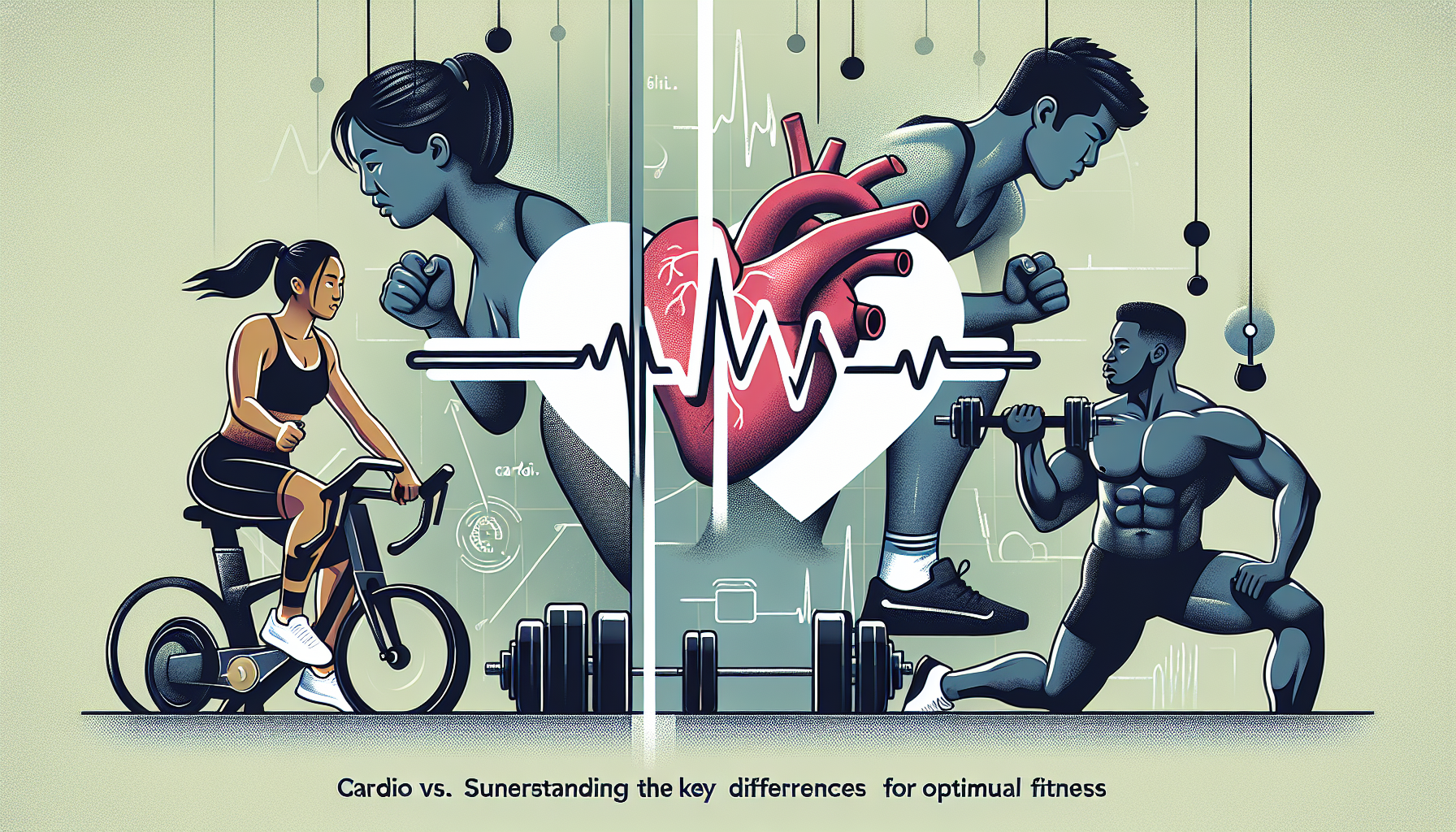Sports
Cardio vs. Strength Training: Understanding the Key Differences for Optimal Fitness

When it comes to fitness, the debate between cardio and strength training is as old as the treadmill itself. If you’ve ever found yourself questioning which form of exercise will get you to your goals faster, you’re not alone. Many folks face this crossroads in their workout journey. In this article, we’ll break down the key differences between these two training styles so you can decide which one—or hybrid—is the best fit for you.
The Basics: What’s the Difference?
At its core, cardio (or aerobic exercise) is all about elevating your heart rate. Think running, cycling, or swimming. On the other hand, strength training focuses on building muscle through resistance, utilizing weights or bodyweight exercises like squats and push-ups.
Cardio: The Heart Hero
Benefits of Cardio
-
Improved Heart Health: Engaging in regular cardio workouts strengthens your heart and lungs. This helps pump oxygen throughout your body, promoting overall cardiovascular health.
-
Calorie Burning: Cardio is fantastic for burning calories, making it a go-to choice for weight loss enthusiasts. High-Intensity Interval Training (HIIT) can especially kick your metabolism into high gear.
-
Mental Boost: Cardio can significantly alleviate stress and anxiety levels, thanks to the endorphins released during exercise. This is often referred to as the "runner’s high."
How to Incorporate Cardio
-
Types of Cardio: From steady-state options like jogging or brisk walking to more intense forms like sprinting or cycling, there’s a type suitable for every fitness level.
-
Frequency: The CDC recommends at least 150 minutes of moderate-intensity aerobic activity each week, which can be easily broken into shorter sessions.
Strength Training: The Muscle Master
Benefits of Strength Training
-
Increased Muscle Mass: Lifting weights helps build muscle, which in turn raises your resting metabolic rate, meaning you burn more calories even when doing nothing.
-
Better Functional Strength: Strength training mimics everyday movements, improving your overall functional fitness. This makes daily activities like lifting groceries or climbing stairs easier.
-
Stronger Bones: Regular resistance training can increase bone density, which is especially important as we age.
How to Incorporate Strength Training
-
Types of Strength Workouts: Whether you prefer free weights, machines, or bodyweight exercises, there’s a style that will resonate with your preferences. Programs like CrossFit or Powerlifting also provide structured ways to challenge yourself.
-
Frequency: Aim for strength training at least twice a week, focusing on different muscle groups each session for optimal recovery.
Balancing Both: The Best of Both Worlds
While specializing in one area can yield results, incorporating both cardio and strength training can elevate your fitness game to new heights.
Why Combine Cardio and Strength?
-
Comprehensive Fitness: A mix of both helps improve cardiovascular endurance while also building muscle. This creates a well-rounded fitness profile.
-
Injury Prevention: Strength training supports joint stability and helps prevent injuries common in cardio-heavy routines.
-
Variety is Key: Mixing things up keeps workouts interesting and sustainable. No one wants to end up in a fitness rut!
Sample Hybrid Workout Plan
- Monday: 20 minutes of HIIT (burpees, jump squats) followed by 30 minutes of strength training (compound lifts).
- Wednesday: 45 minutes of steady-state cardio (running or cycling).
- Friday: Circuit training that combines resistance exercises with short bursts of cardio (like kettlebell swings followed by a 400m run).
What Should You Choose?
Ultimately, your ideal workout regimen depends on various factors, including your fitness goals, schedule, and personal preferences. Here’s a quick breakdown to help you decide:
-
If you’re focused on weight loss: Cardio might take the lead, but don’t forget to pepper in some strength training for muscle retention.
-
If you’re looking to build muscle: Prioritize strength training and include some cardio for heart health.
-
If you want overall fitness: Mix them up! Embrace a balanced approach for the best of both worlds.
Tracking Progress
Whatever route you take, be sure to track your progress. Apps like MyFitnessPal or Fitbit can help. And remember, consistency is key.
Conclusion
In the battle of cardio vs. strength training, there’s really no loser. Each has its unique benefits that can work in harmony for optimal fitness. The best approach is to listen to your body and mix things up according to your personal needs. So, get out there, find what you love, and don’t forget to enjoy the process!
For more tips on optimizing your workout routine, check out our articles on the benefits of yoga and nutrition for active lifestyles.
Resources for Further Reading
- CDC Physical Activity Basics: CDC.gov
- The Science of Strength Training: Harvard.edu
So, what are you waiting for? Whether it’s chugging away on the treadmill or pumping iron, find what excites you and jump in! Your body will thank you.
-

 News1 day ago
News1 day agoTeenage US Citizen Records Brutal Arrest by Immigration Agents Who Told Him, ‘You Have No Rights’
-
News24 hours ago
Maltese Police Officers Participate in Operation in the Black Sea
-

 Business1 day ago
Business1 day agoNavigating the Economic Landscape: Key Insights from Today’s Business Headlines
-

 News23 hours ago
News23 hours ago“Honoring Ukraine: A Tribute” (July 26, 2025) — dynamo.kiev.ua
-

 Business21 hours ago
Business21 hours agoThe Top 10 Business Opportunities to Watch in 2025
-

 Entertainment1 day ago
Entertainment1 day agoCinematic Success: Fun Facts About Movies That Shaped the Film Industry
-

 Business24 hours ago
Business24 hours agoNavigating the Shifting Sands: Key Global Economic Trends for 2024
-

 Entertainment23 hours ago
Entertainment23 hours agoBehind the Magic: Unveiling the Secrets of Iconic Film Productions
